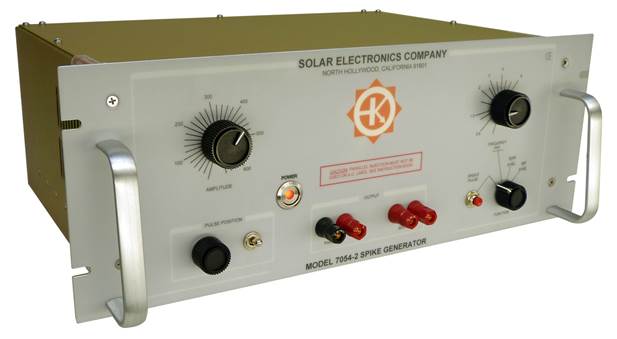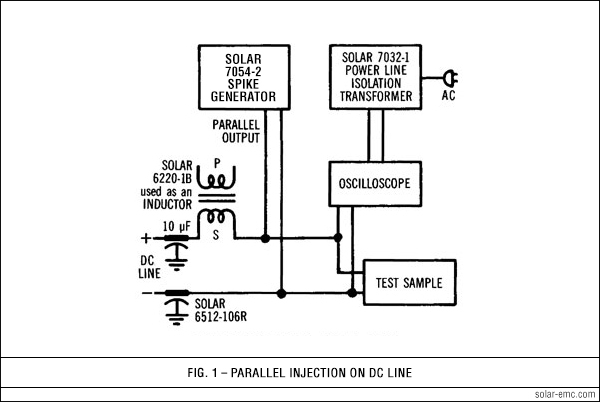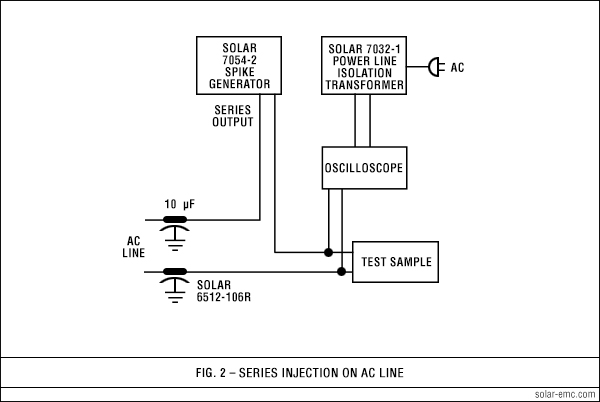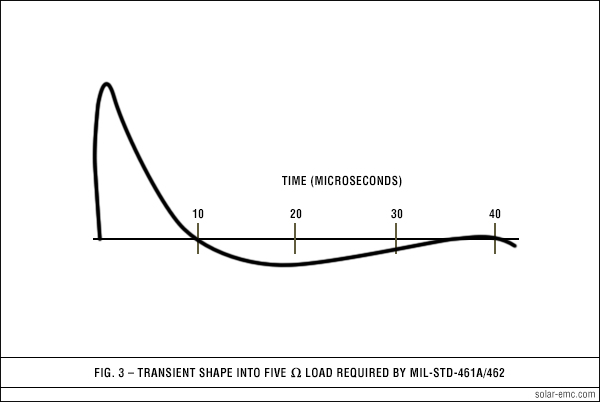Model 7054-2 Spike Generator 600 Vfor conducted transient susceptibility testing up to 600 V peak |


|
|
SOLAR SPIKE GENERATOR UPDATE APPLICATION DESCRIPTION On 50, 60 or 400 Hz power lines the transient can be applied in a periodic manner to the negative or the positive half-cycle of the power frequency. The transient's relation to the sine wave may be adjusted in phase from 0° to 360°. For non-synchronous injection on either AC or DC lines, the repetition rate can be adjusted from 0.8 pulse per second to 10 pulse per second. Single transients can be applied with the pushbutton on the panel. Two sets of output terminals allow either parallel or series injection into the power line. Series injection is used on AC lines. Parallel injection is used on DC lines. The output winding used for series injection can carry 25 A of power current. The output terminals are isolated from the chassis and the power cord.
|
||||||||||||
|
|
||||||||||||
| Spike amplitude: Continuously adjustable from less than 10 V to 600 V peak |
| Repetition rate: Continuously adjustable from 0.8 to 10 pulses per second |
| Rise time: Less than or equal to 2.0 µS into 5 Ω resistive load |
| Spike duration: Output falls to zero in approximately 10 µS |
| Spike shape: See Figure 3. Similar to Figure 19 of MIL-STD-462 |
| Phase adjustment: Spike position adjustable from 0° to 360° periodically on 50, 60 or 400 Hz sine wave |
| Internal impedance: Less than 0.5 Ω |
| Output power: More than 300 kW peak into 0.5 Ω load |
| Power current in series injection mode: Handles up to 25 A of current at power frequencies |
| Power requirements: 115 V 60 Hz, 1.6 A (230 V 50 Hz, 0.8 A available) |
|
Dimensions, standard rack panel: 19" wide x 7" high x 12.75" deep (48.26 cm x 17.78 cm x 32.38 cm) |
| Weight: 28 pounds (12.7 kg) |
| Boxed weight (approx.): 36 pounds (16.33 kg) |
 |
 |
 |
Solar Type 2201-1 Impedance Matching Transformer Plugs into SERIES output terminals of Model 7054-2 to provide a 50 Ω source capable of 200 V to 600 V open circuit per RTCA/DO-160G, Section 17 Category A Solar Type 2201-2 Impedance Matching Transformer Plugs into SERIES output terminals of Model 7054-2 to provide a 50 Ω source capable of 200 V to 1000 V open circuit per RTCA/DO-160G, Section 17 Solar Type 2201-3 Impedance Matching Transformer Plugs into SERIES output terminals of Model 7054-2 to provide a 50 Ω source capable of 56 V to 200 V open circuit per RTCA/DO-160G, Section 17 Category B |
|
Solar Model 7054-2A Solar Model 7054-2B |

